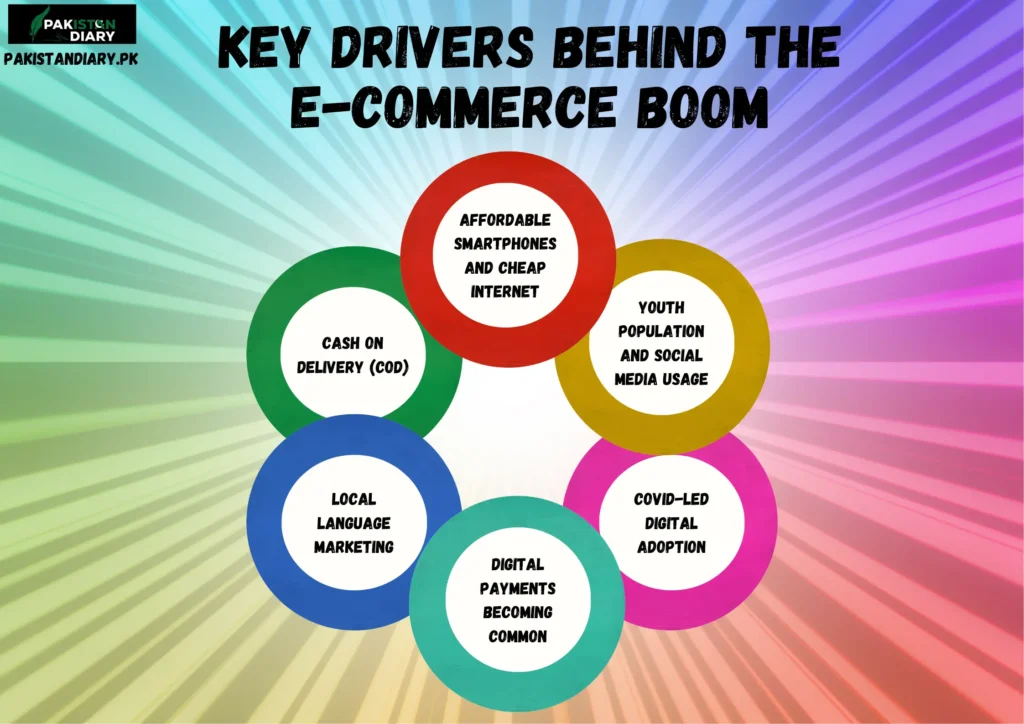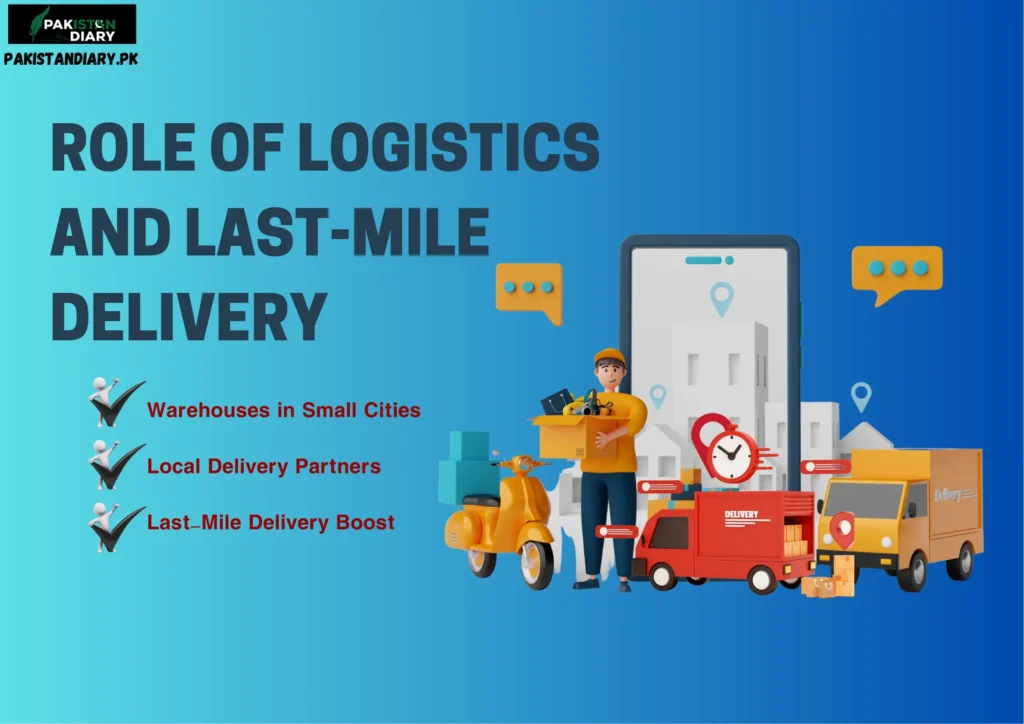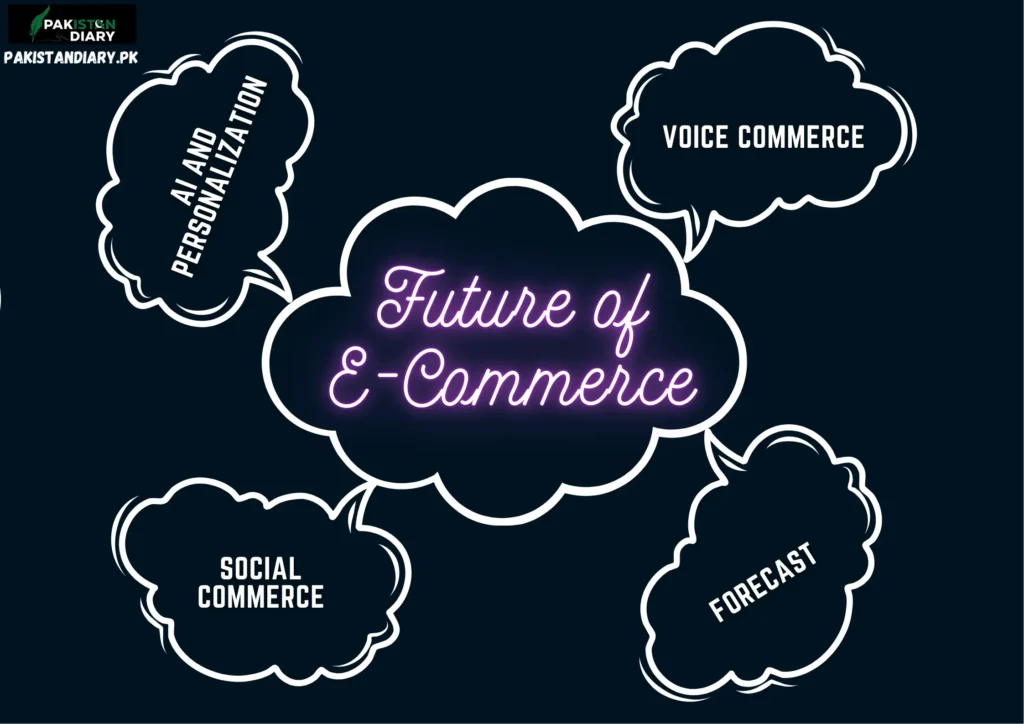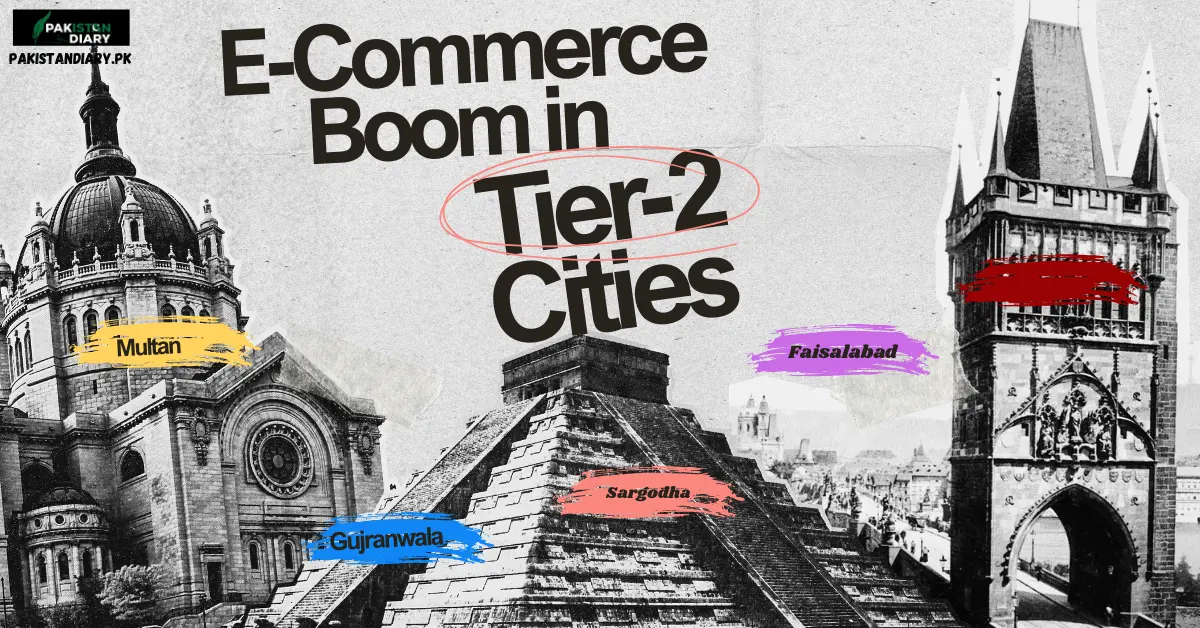A lot of the time, e-commerce is related to big cities like Islamabad, Karachi, or Lahore. But in the past few years—especially following COVID—something extraordinary happened. People in smaller cities like Faisalabad, Multan, Indore, and Mysore have started shopping online in large numbers.
According to a 2025 report by RedSeer and Bain & Company, over 60% of new e-commerce shoppers in South Asia are now coming from Tier-2 and Tier-3 cities. This is no longer just a big-city trend. E-commerce is booming beyond the metros.
In this blog, we’ll take a closer look at how and why this change is happening. I’ll also share some real examples, fresh data, and my personal experiences working with small online sellers across Pakistan.
Why Do Tier-2 Cities Matter? What Are They?
Let’s first define Tier-2 and Tier-3 cities before we explore more.
In simple terms:
- Tier-1 cities are the big metro cities: Karachi, Mumbai, Delhi, Lahore, etc.
- Tier-2 cities are medium-sized ones where populations are growing, their incomes are rising, and their internet access is good. Faisalabad, Gujranwala, Sialkot, Indore, Coimbatore, and Lucknow are some examples.
- Tier-3 cities are even smaller towns and places that are kind of like cities. Examples are Sahiwal, Bahawalpur, and Mardan.
These cities matter a lot because they have:
- Millions of people (Faisalabad alone has over 3 million residents).
- Rising middle-class families.
- Young people who use smartphones and social media daily.
- Lower rent and business costs compared to big cities.
Because of all this, Tier-2 cities have become the new hotspots for online shopping.
Key Drivers Behind the E-Commerce Boom
Many things are helping e-commerce grow in small cities. Let’s talk about them one by one:

Affordable Smartphones and Cheap Internet
Mobile phones are now cheap. In Pakistan, you can get a good 4G phone for under PKR 20,000. In India, it’s even cheaper.
Also, internet packages are affordable. According to GSMA’s 2025 report, over 40% of people in Asia Pacific now have mobile internet, and most new users are from rural or Tier-2 areas.
Youth Population and Social Media Usage
Young people in these cities are active on TikTok, YouTube, and Facebook. They watch videos, follow influencers, and want to buy what they see.
Even small brands can now target these users using regional language ads.
COVID-led Digital Adoption
COVID changed how people shop. During lockdowns, even in small cities, people started ordering groceries and clothes online. Many of them continued even after the lockdowns ended.
Cash on Delivery (COD)
People in Tier-2 cities still prefer to pay cash when the product arrives. Platforms like Daraz and Amazon offer COD, which builds trust and encourages first-time buyers.
Local Language Marketing
Apps and websites nowadays provide services in Urdu, Hindi, Tamil, Punjabi, and other local languages. For first-timers especially, this makes shopping online simpler.
Digital Payments Becoming Common
Apps like Easypaisa, JazzCash (Pakistan), and UPI/Paytm (India) have made it easy to pay with phones. This helps both buyers and sellers from small cities.
Top E-Commerce Categories in Tier-2 Cities
Challenges Faced in Tier-2 Markets
Even though the growth of e-commerce in small towns is fast, there are still many real problems that businesses and customers face. These challenges must be understood clearly to improve online shopping in Tier-2 and Tier-3 cities.
1. Low Digital Literacy and Internet Skills
In many Tier-2 and Tier-3 cities, people are still learning how to use smartphones, websites, and digital payment apps like EasyPaisa or UPI. Many don’t know how to search for products, place orders, or use customer support.
This slows down the speed of digital transformation in rural and semi-urban areas.
2. Trust Issues with Online Shopping
First-time users often worry about being scammed. They ask questions like:
- Will I get the correct product?
- What if the product is damaged?
- Can I return it?
Because of this, Cash-on-Delivery (COD in Tier-2 cities) becomes important. It allows buyers to pay only when the product reaches them. Still, fear of fraud or non-delivery stops many from trying online shopping.
3. Return and Refund Problems
In big cities, product returns are easy and fast. But in smaller towns, returns can take many days. In some cases, the delivery team doesn’t even support returns properly.
This makes customers unhappy and they stop trusting e-commerce platforms.
4. Language and Communication Gaps
Many platforms only support English or national languages like Urdu or Hindi. People from small towns may speak regional languages or dialects. This creates confusion while reading product details or customer service replies.
Improving regional language support is very important to build trust and comfort.
5. Poor Road and Infrastructure Conditions
Delivery trucks and courier boys often face roadblocks, bad roads, or electricity issues in Tier-2 cities. This causes delays in product delivery.
These infrastructure and logistics bottlenecks hurt both customer experience and seller performance.
Challenges in Tier-2 City Online Shopping Trends
| Challenge | Description | Related Keyword |
| Digital literacy gaps | Many users are new to mobile shopping and don’t understand how to shop | Rural and semi-urban digital transformation |
| Trust issues | Fear of scams, product damage, or fake sellers | Tier-2 city online shopping trends |
| Return/refund complications | Difficult or delayed return process | Growth of e-commerce in small towns |
| Language barrier | Regional languages not supported on many apps | Tier-2 and Tier-3 city consumer behavior |
| Logistics bottlenecks | Late delivery due to road, weather, or system issues | E-commerce logistics in small cities |
Impact on Local Economies and Jobs
The rise of e-commerce in Tier-2 cities is not just helping buyers — it is also changing the way people earn and do business. Small towns are now becoming important parts of the online economy.
1. Local Businesses Going Online
In cities like Gujranwala, Mysore, and Bahawalpur, many small shop owners, tailors, shoe sellers, and people who work from home are now offering online through sites like Daraz, Facebook Shops, and WhatsApp.
This helps them get their business out of the local area and meet more customers.
For example, in Faisalabad, many clothing sellers are now receiving daily orders through Daraz and social media.
2. Rise of Women Entrepreneurs
E-commerce in Tier-2 cities has opened doors for women who couldn’t work outside the home. Now they are running businesses from home—selling makeup, food, clothes, and handmade crafts.
Many of these women use digital payment systems like JazzCash and EasyPaisa to receive payments and grow their reach.
3. More Jobs in Delivery and Logistics
As more people shop online in small towns, companies like TCS, Leopard Courier, and Amazon have started hiring local delivery riders, warehouse workers, and support staff.
These jobs are important because they offer steady income in areas where employment was once low.
4. Growth of Local Brands Online
Some local brands from Tier-2 cities are now famous nationwide. They use e-commerce to sell products like herbal cosmetics, traditional clothes, or handmade shoes. Their online presence also builds the identity of their city or region.
Economic Impact of E-Commerce in Small Cities
| Area of Impact | Details | Related Keywords |
| Small businesses going online | Local sellers using Daraz, Facebook, WhatsApp to sell | Local brands online |
| Women-led home businesses | Women starting businesses from home using digital platforms | Rural and semi-urban digital transformation |
| New delivery jobs | E-commerce logistics companies hiring delivery agents in small cities | Last-mile delivery solutions |
| Growth in local brand recognition | City-based products becoming known nationwide through online stores | E-commerce in Tier-2 cities |

Role of Logistics and Last-Mile Delivery
Getting products to these smaller cities used to be hard. But now, logistics has improved a lot.
Warehouses in Small Cities
Platforms like Daraz and Amazon have opened small warehouses (dark stores) in cities like Multan, Sialkot, and Gujranwala. This helps reduce delivery time.
Local Delivery Partners
Companies like TCS, Leopard Courier, and India Post have created special services for small towns. Many now offer same-week delivery even in far-off places.
Last-Mile Delivery Boost
“Last-mile” means the final step where a parcel reaches your home. Many delivery boys are now from the local area. This makes delivery smoother and faster.
Real-World Examples: Success Stories from Tier-2 Cities
Let’s look at real places where this boom is happening:
Faisalabad, Pakistan
Known for textiles, many small sellers from Faisalabad are now selling clothes on Daraz and Instagram. One seller I met started with just 10 suits, now ships 50 orders per week.
Indore, India
Flipkart reports that Indore has seen over 120% year-on-year growth in online electronics sales between 2023 and 2025.
Sialkot, Pakistan
Famous for sports gear, local shops now ship gloves, footballs, and gymwear through Amazon Global and Daraz.

The Future of E-Commerce in Tier-2 Cities
So, what’s next?
AI and Personalization
Apps will get smarter. They’ll show product suggestions based on your past purchases—even in Urdu or Hindi.
Voice Commerce
People will start shopping by speaking to apps in their local language. It’s already happening in India with Google Assistant.
Social Commerce
Selling on TikTok, WhatsApp, and Facebook Live will grow fast. Small sellers love this because it’s free and personal.
Forecast
Experts from Statista predict that by 2030, over 70% of all new e-commerce customers in South Asia will come from Tier-2 and Tier-3 cities.
Conclusion
The e-commerce boom in Tier-2 cities is real. It’s not a side story—it’s the main story now. With better internet, smartphones, payment options, and logistics, small cities are driving online shopping like never before. For businesses, this means one thing: Don’t just focus on big metros—look beyond. The digital future belongs to everyone, not just the big cities.





